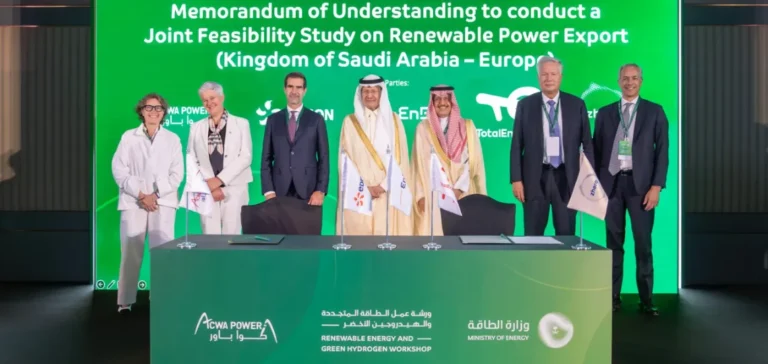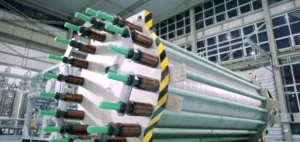Saudi company ACWA Power has signed a series of agreements and memoranda of understanding with several European companies to establish a green hydrogen and renewable electricity export chain to Europe. These commitments were formalised in the presence of the Minister of Energy, Prince Abdulaziz bin Salman bin Abdulaziz Al Saud, during a workshop on renewable energy exports held in Riyadh.
Structuring partnerships for an energy corridor
Signatories include Edison S.p.A (Italy), TotalEnergies Renewables SAS (France), Zhero Europe B.V. (Italy) and Energie Baden-Württemberg AG (Germany), which signed a multi-party memorandum of understanding with ACWA Power. The agreement provides for a joint feasibility study on large-scale renewable energy projects in Saudi Arabia dedicated to export, as well as the establishment of an electricity transmission corridor to Europe.
In parallel, bilateral agreements were concluded with several European technology suppliers. These partnerships include CESI (Italy), specialised in energy engineering, Prysmian (Italy), GE Vernova, Siemens Energy (Germany), and Hitachi (France), all involved in high-voltage direct current (HVDC) transmission solutions. These collaborations aim to design more efficient cross-border energy infrastructures.
A production hub in Yanbu by 2030
ACWA Power and EnBW signed a joint development agreement to launch the first phase of the Yanbu Green Hydrogen Hub project. This energy complex, expected to enter into commercial operation by 2030, will integrate its own renewable electricity generation, a desalination unit to supply electrolysers, and facilities to convert hydrogen into ammonia for export.
All these agreements fall within the framework of the India-Middle East-Europe Economic Corridor (IMEC) project, which aims to strengthen regional integration and logistical connectivity. According to the partners, Saudi Arabia’s strategic location is a key advantage in becoming a major player in energy security and intercontinental electricity transit.
The Saudi Ministry of Energy stated that these commitments reflect the Kingdom’s ambition to fully leverage its low-cost renewable production potential to meet global industrial demand.






















